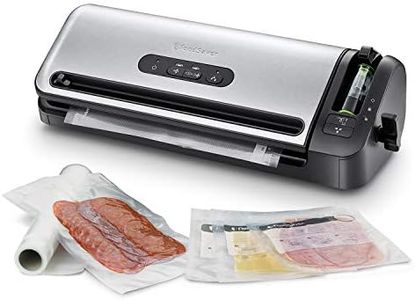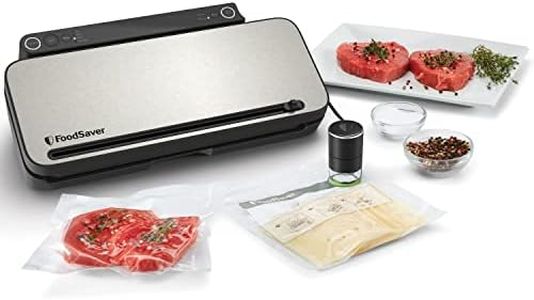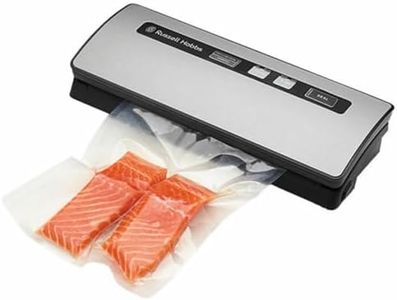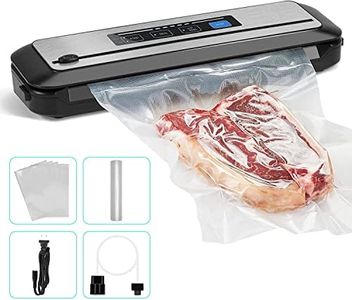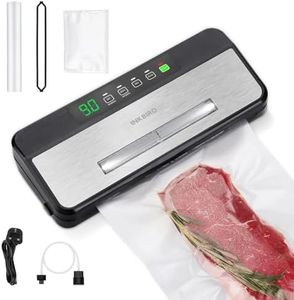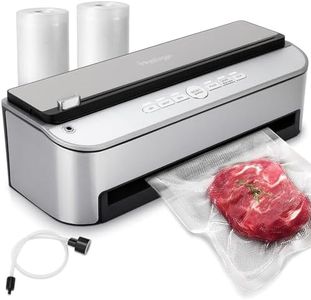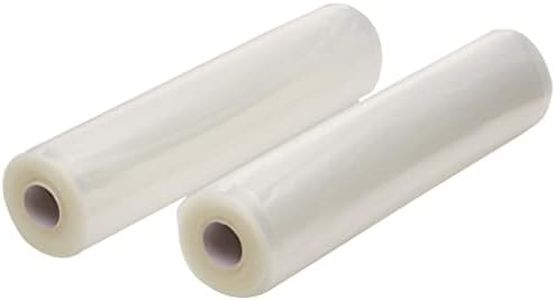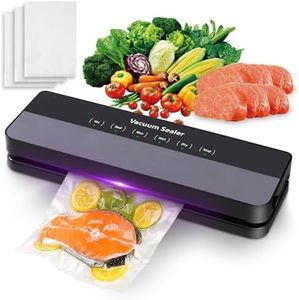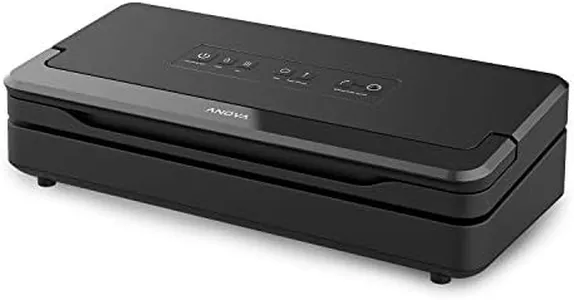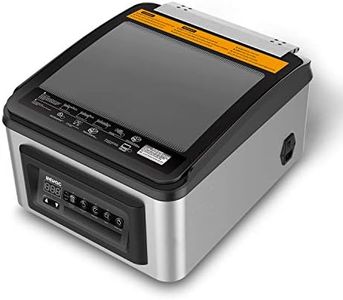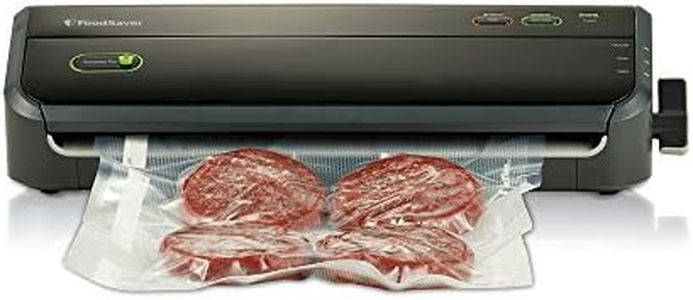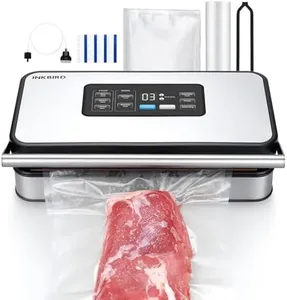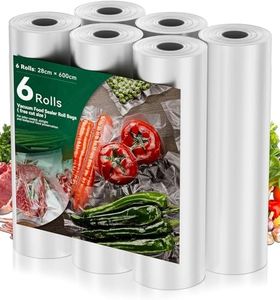We Use CookiesWe use cookies to enhance the security, performance,
functionality and for analytical and promotional activities. By continuing to browse this site you
are agreeing to our privacy policy
10 Best Food Sealer Vacuum Sealer
From leading brands and best sellers available on the web.Buying Guide for the Best Food Sealer Vacuum Sealer
Choosing the best food sealer, also known as a vacuum sealer, helps keep your food fresh for longer, saves space in your fridge or freezer, and can save you money by reducing food waste. When picking a vacuum sealer, it’s important to think about how often you'll use it, what types of food you plan to seal, and whether you need it for small home use or larger food storage challenges. Understanding the key technical and design features will help you make a choice that fits your lifestyle and food storage needs.Sealing MethodThe sealing method is how the vacuum sealer removes air and seals the bag. There are generally two types: external (external or edge sealers) and chamber sealers. External sealers are more compact and ideal for home use, sealing standard bags by sucking the air out at the edge. Chamber sealers tend to be bigger and more expensive, but they allow you to seal larger quantities and even liquids. If you mostly seal solid foods and want a simple experience, an external sealer fits well. For frequent use, or if you need to seal soups or marinades, a chamber sealer is a better choice.
Vacuum Strength or Suction PowerVacuum strength refers to how strongly the machine can remove air from the bag. Stronger suction results in longer-lasting freshness but may not always be necessary for softer or delicate foods. Suction is often measured in inches of mercury (inHg), with higher numbers signifying stronger vacuum. If you plan to store meat, bulk items, or foods for long periods, aim for higher vacuum power. For occasional use or delicate items like baked goods, a lower or adjustable strength is helpful to prevent crushing.
Bag CompatibilityBag compatibility means the type and size of bags your vacuum sealer works with. Some sealers are designed for specific branded bags or rolls, while others are compatible with generic options. Consider whether you want the convenience of pre-cut bags or the flexibility of longer bag rolls you can cut to size. If you want to minimize ongoing costs and have more flexibility, look for a sealer compatible with various generic bags and rolls.
Operation Mode and SettingsOperation mode and settings describe whether the machine offers manual and automatic modes, as well as adjustable sealing and vacuuming times. Automatic models offer the most convenience, sealing at a single button press, while manual modes let you control the exact timing, which is helpful for managing fragile foods. Some machines also have settings for dry or moist foods. If you want a hassle-free experience, automatic-only is good; if you’ll seal a variety of foods, having manual options and multiple food modes is best.
Size and StorageSize and storage refer to the dimensions and weight of the vacuum sealer. Countertop space is valuable, so a compact unit is easier to handle and store. If you have limited space or will only use the sealer occasionally, choose a smaller model. For frequent, bulk sealing or if you don't mind a larger appliance, a heavier-duty unit may be appropriate. Consider where you’ll keep it between uses and how portable you need it to be.
Ease of CleaningEase of cleaning is about how simple it is to keep the sealer sanitary, which matters especially if sealing moist foods. Some machines have removable drip trays or easy-to-wipe surfaces. If you seal wet or juicy foods often, look for features that simplify cleanup. For mostly dry foods, ease of cleaning is less critical but still a help for maintenance.
